The Hosiers' Guild
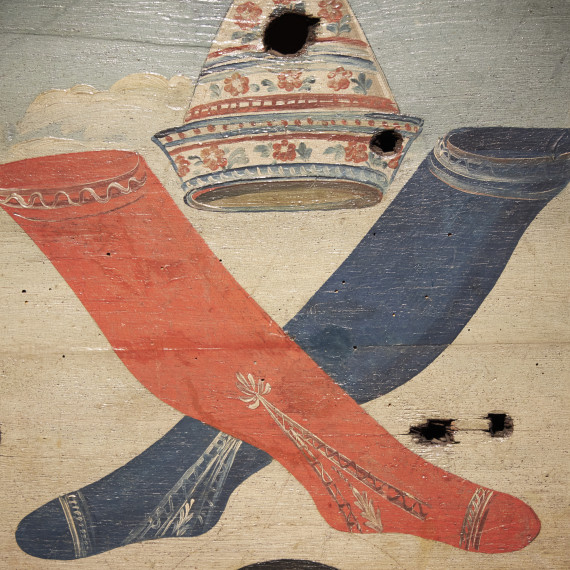
Erlangen's New Town was originally a free trade zone. Hosiers only became interested in the governance of their craft when competition increased with the arrival of new immigrants, and when prices and the quality of stockings deteriorated as a result. The first statutes issued for the craft in 1698, however, only remained in force for a few years because of ongoing complaints by the journeymen. A new guild order was issued in 1709, whose revised 1725 version remained in force into the 19th century.
The 1725 hosier's guild order regulated the structure of the guild, the admission of masters, working conditions, and the journeymanship and apprenticeship system. True to its underlying conservatism, obtaining approvals to build new stocking frames and obtain master status was made more difficult. The aim to create approximately equal material conditions within the craft is also reflected in the rule that no master was to own more than four stocking frames.
In the long term, these restrictions impeded the industry's progress because they prevented free enterprise and large-scale production. The fact that stocking frames were treated as real estate also had a negative impact. It led to the mortgaging and overpricing of stocking frames, and obstructed the introduction of technological innovations.
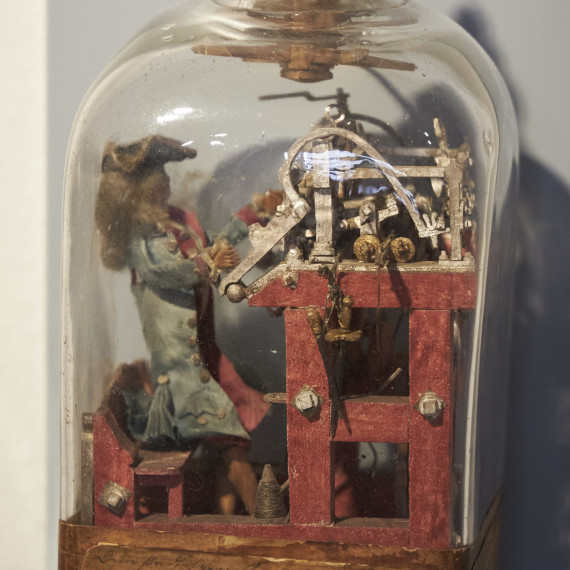
The hosiers' guild sign
Erlangen, 1719
This guild sign consists of a small, accurately reproduced stocking frame with a hosier at work. To emphasise the respectability of the craft, the hosier is shown not in his work clothes, but in fashionable attire. He is wearing a coat fitted at the waist, knee-breeches, a lace cravat, and a tricorne, even a wig; an épée hangs from the stocking frame. This model was set up in a glass bottle to protect its delicate workmanship. Presumably, this Eingericht ('interior’) stood in the bar of the tavern where hosiers gathered. Around 1775, the master's 'local' was the Brandenburgisches Haus ('Brandenburg House') inn (16, Goethestraße) and that of the journeymen was the Stadt Hamburg ('City of Hamburg') at 12, Friedrichstraße.
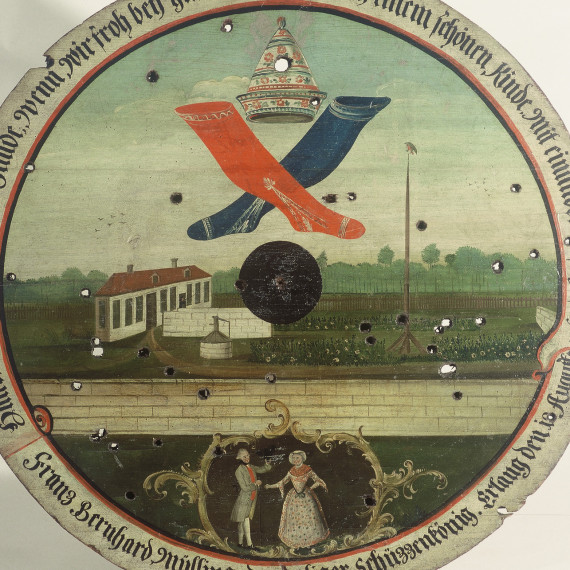
Shooting target with hosiers' guild sign
Oil on panel, Erlangen, 1776
This ceremonial target disc was donated by the master hosier and then Schützenkönig ('shooters' king', a title given to the winners of the traditional annual shooting competitions connected to citizen's defence corps), Bernhard Mühling. It shows the New Town's Schießhaus ('shooters' house') below two crossed stockings and an embellished cap. The accurate details of this illustration show the flower pattern above the stocking heels.
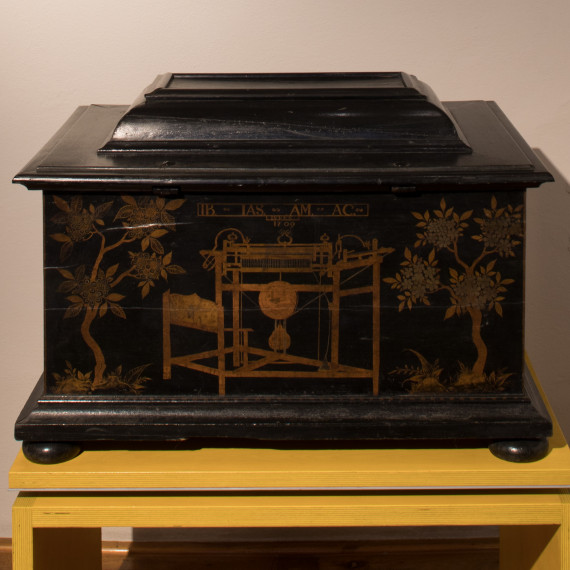
Hosiers' guild chest
Wood, varnished and painted, Erlangen 1709
The chest is decorated with lacquer paintings depicting, on the front, the Margravial coat of arms with the Brandenburg and Prussian eagle between trees in blossom, all beneath the initials of Margrave Christian Ernst. On the back, the Rößchenstuhl stocking frame is depicted between blossoming trees. The chest was used to store the guild seal and guild cloth, as well as the dues that had to be paid to the guild. According to old custom, journeymen were inducted as masters next to the open guild chest.
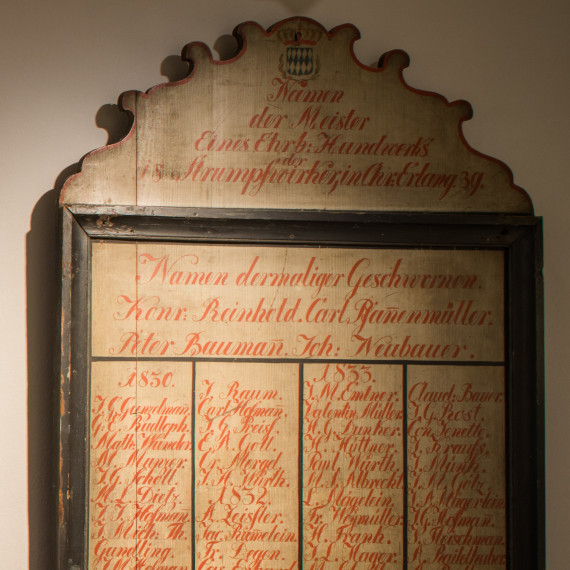
Hosiers' Board of Masters
Oil on panel, Erlangen, 1839
This register lists the names of all master hosiers inducted since 1830. Among the 88 names, only three are recognisably of French origin. According to the trade register, 306 hosiers were left in 1838.
Header panels from Boards of Master Hosiers
Oil on panel, around 1790 (?) and 1796
Both header panels carry bilingual inscriptions. The later version takes into account the then long diminished proportion of French members, putting the German language in first place. In 1798, only 11 of the 309 active master hosiers were French.
< Previous chapter | Next chapter >
